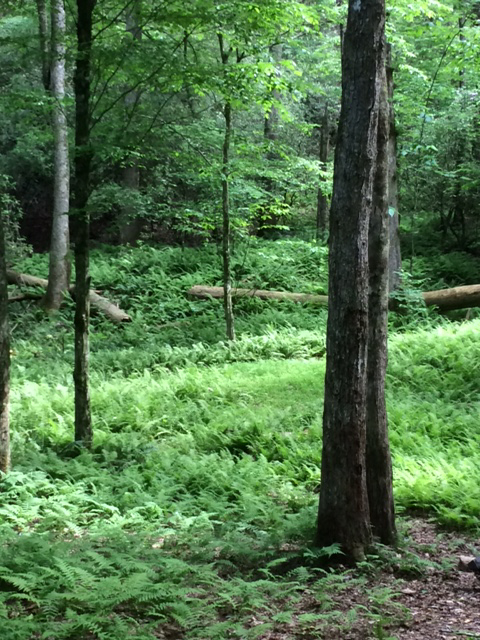I spoke with Katy Ross, owner of Night Song Native Plant Nursery, about one of the rarest and most unusual plants in the world. I will discuss in subsequent posts the other plants I got at the “Spring Open House and Earth Day Celebration,” on April 23rd, 2016.
The first plant I will talk about is the “Franklin Tree.” Already special for many historical reasons, I found a personal connection with this plant in my previous research and writing. That connection, as well as this plant’s interesting history, made it particularly noteworthy.
The photo below shows a recovering plant after it was eaten down to one, sad leaf by the plentiful deer population. I took the pic of this green anole pretending to be a stick, after moving it to the back porch from the front yard-where I intended to plant it. It grew a few more leaves trying to recover as this photo shows, but …
I will save more suspense and say that despite my best efforts, the Franklinia Alatamaha did not survive. This is the last photo of the very special, rare tree I was so excited about.
There is however, a lesson in this about nature and gardening. A lesson that teaches about disappointment and acceptance. A lesson about patience and trying again next year. A lesson about about why plants might go extinct in the wild. It seems that deer, or some other mystery critter, love to eat this plant. The other plants I got that day are thriving, and I will post about those next!
I spoke with owner Katy Ross, asking her to tell me about this plant. It drew my interest because the sign said “discovered by William Bartram.” I completed a project on William Bartram a few years ago, so I wanted to know about and purchase this plant.
Katy told me the plant was discovered by Bartram growing near the Alatamaha River in Georgia, and was also named after Ben Franklin. Her information lead me to do more research online. I meant to ask her how she discovered the plant, but forgot in my excitement.
I did not talk to Katy about the importance of native plants that day. Later reading one of her brochures, I was lead to nightsongnatives.com website. The “Why Natives” webpage contains important, valuable information on why using native plants is critical to ecosystem health.
I can’t wait to return to Night Song Native Plant Nursery for more interesting native plants.
Finally, check out my project on Bartram titled Finding Buffalo Creek. I was inspired by his explorations of Georgia, his ties to important historical events, and his descriptions and drawings of native plants.






















